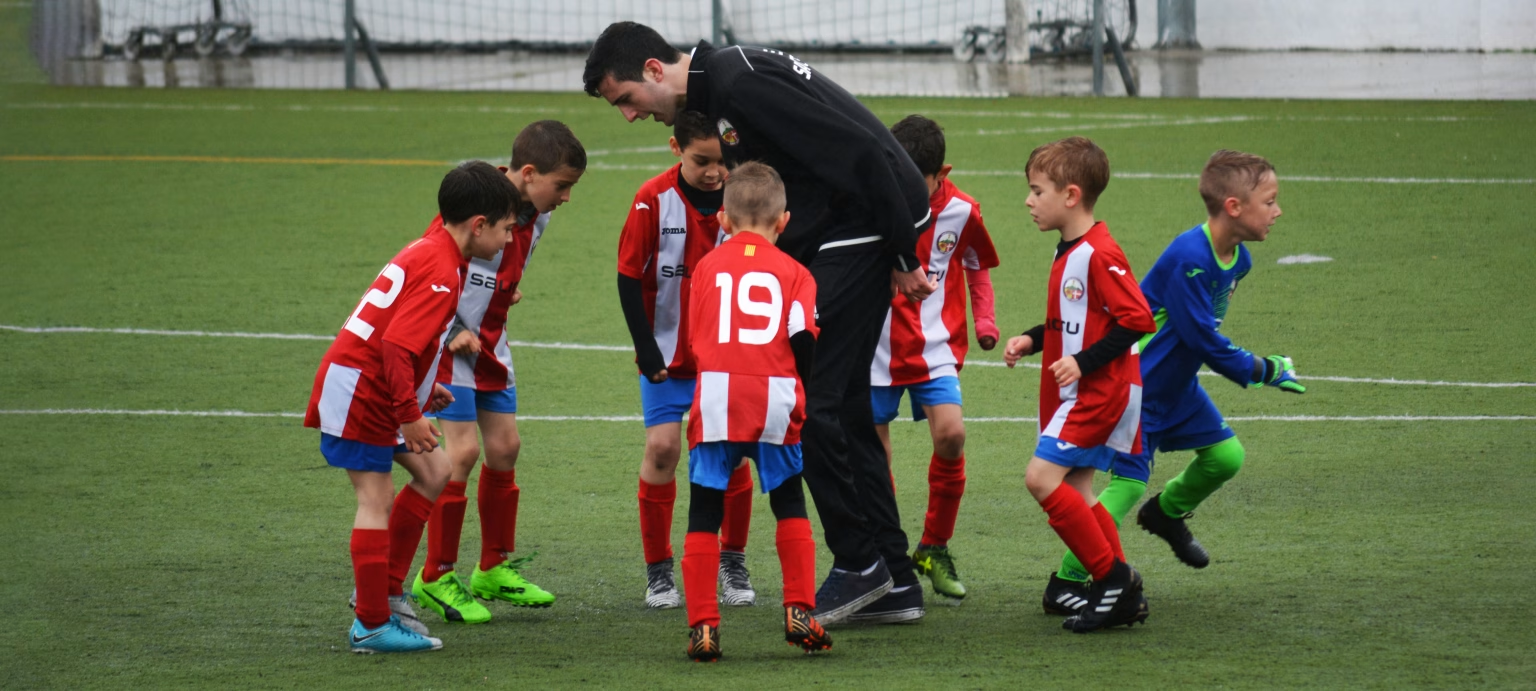Introduction: Why Talent Is More Than Just Performance
Many people associate talent with exceptional ability that manifests early and can be demonstrated through competitive success. Young athletes who dominate their age group are often automatically considered highly talented. However, sports science has long shown that talent is far more than just a snapshot of youth performance.
The broad concept of talent takes this insight into account. Instead of relying solely on measurable competition results, it views athletic talent as an interplay of motor, psychological, and social factors. Studies indicate that this multidimensional perspective provides a more reliable basis for talent diagnostics than the traditional approach, which evaluates only current performance (Gagné, 2004; Hohmann & Seidel, 2004). This article explains why talent is not merely an innate ability but rather develops over years and is shaped by multiple influencing factors.
What Is the Broad Concept of Talent?
The broad concept of talent assumes that athletic talent is not solely determined by genetic predisposition or early success. Instead, it includes various developmental factors that can change over time. While the static-narrow concept of talent assumes that talent must be visible early, the broad concept considers an athlete’s long-term development and adaptability to training and competition demands (Schnabel, Harre & Krug, 2011).
This approach is based on scientific models such as the Differentiated Model of Giftedness and Talent (DMGT) by Gagné (2004), which distinguishes between genetic giftedness and actual talent. An athlete may possess excellent physical attributes, but only through targeted training and a supportive environment can they fully realize their potential. This means that talent should not be viewed as a fixed state but rather as a dynamic process influenced by external factors.
A central issue with the static-narrow concept of talent is that it excludes many potential elite athletes simply because they do not stand out at a given point in time. Studies have shown, however, that many successful athletes were not the best in their age group during their youth but reached the top through long-term development and continuous training (Vaeyens et al., 2008).
The Three Pillars of the Broad Concept of Talent
Motor and Cognitive Abilities as a Prerequisite
Physical performance is an essential requirement for athletic success. Fundamental motor skills such as strength, speed, endurance, and flexibility play a crucial role. However, these abilities alone are not sufficient for top performance; their development is not linear and is highly individual. The broad concept of talent recognizes that these attributes are shaped by training and do not need to be fully developed at a young age (Hohmann & Seidel, 2004).
Studies show that cognitive aspects are often underestimated in talent evaluation, even though they are essential for long-term development. Cognitive abilities such as reaction speed, tactical understanding, and anticipation are crucial for many sports. A soccer player with exceptional game intelligence, for example, can compensate for physical deficits and still achieve outstanding success (Fuchslochner et al., 2011).
Psychological Factors: Mental Strength as a Talent Criterion
Mental strength is a crucial factor in competitive sports. Many highly gifted athletes fail not due to their physical abilities but because of a lack of motivation, perseverance, or the inability to handle pressure. The broad concept of talent considers these psychological aspects and recognizes that traits such as resilience, concentration, and self-regulation are vital for an athlete’s success (Gagné, 2004).
A study by Hohmann & Seidel (2004) found that successful athletes in early development phases often did not achieve the best competition results but had a pronounced ability for self-reflection and adaptation. This long-term mental stability is a key factor for later peak performance.
Environment and Social Factors as a Decisive Influence
The social environment has a tremendous influence on talent development. Support from family, coaches, and teammates can be crucial in determining whether an athlete reaches their full potential. While some children benefit from early professional support, there are also examples of athletes who come from challenging backgrounds yet still succeed.
A comparison of different countries shows that talent development strongly depends on cultural and structural factors. While talent identification systems in countries like the USA often focus on individual support, centralized youth development systems are more common in Eastern Europe, allowing for systematic long-term development (Vaeyens et al., 2008).
Scientific Evidence for the Broad Concept of Talent
The idea that talent is more than just an innate ability or early competition success is supported by numerous scientific studies. Researchers from various disciplines have investigated how talent develops and which factors play a role. The findings show that talent is a multidimensional construct that unfolds over years and is strongly influenced by external factors.
Gagné’s “Differentiated Model of Giftedness and Talent” (DMGT): Talent as a Developmental Process
One of the most well-known theories on talent development comes from François Gagné (2004). His Differentiated Model of Giftedness and Talent (DMGT) distinguishes between giftedness and talent, describing how natural predispositions must be shaped by external factors to manifest in top performance.
According to Gagné, every athlete begins with a certain genetic predisposition, which may appear in motor, intellectual, or creative abilities. However, these predispositions alone are not enough to guarantee success in sports. Only through the influence of training, motivation, environmental conditions, and psychosocial factors can a promising ability become actual talent.
Gagné also emphasizes that talent is a dynamic process that must be supported through targeted development and an optimal environment. This approach stands in clear contrast to the static-narrow concept of talent, which assumes that talent appears early and remains constant.
The Magdeburg Talent Model: A Practical Implementation of the Broad Concept of Talent
Another significant model for talent development was created by Hohmann & Seidel (2004), who developed the Magdeburg Talent Model as a practical approach for talent identification and development in German youth sports.
This model assumes that talent development should not be based on a single selection process but rather viewed as a continuous process over several years. It describes talent development as an interaction of multiple factors that manifest differently in various developmental phases:
- Early foundation stage: Focus on broad motor skills, physical fundamentals, and playful talent development.
- First specialization stage: Initial sport-specific training, but still emphasizing general athletic development rather than competition results.
- Intensified development & talent prognosis: More precise talent assessment based on performance, endurance, motivation, and development trajectory.
- Transition to elite sports: The final decision about a professional sports career often happens in late adolescence rather than childhood.
The Magdeburg Talent Model highlights that the best talents are not necessarily those who achieve the greatest success in youth. Instead, late bloomers often become just as successful, if not more so, than early developers when given long-term support.
Studies on the Long-Term Development of Elite Athletes
Numerous scientific studies have now demonstrated that early competition success is no guarantee of future elite performance.
A large-scale study by Vaeyens et al. (2008) found that only a small percentage of the most successful youth players make it to professional sports. The researchers analyzed data from European soccer and found that only 2–5% of the top U15 players later played in one of the highest leagues.
Similar findings have been observed in swimming. Conzelmann (2007) studied the development of successful youth swimmers and found that many left the sport before reaching elite levels. One possible reason is that they had already trained at their performance limit at a young age, leaving little room for future improvement.
Conclusion: Why the Broad Concept of Talent Is the Future
The notion that talent is an innate and unchangeable trait has persisted in the sports world for decades. However, current scientific findings show that this view is not only outdated but often misleading, as talent predictions based solely on early competition success are often unreliable. The broad concept of talent offers a more realistic and evidence-based perspective, focusing on an athlete’s long-term development process.
Studies like Gagné’s Differentiated Model of Giftedness and Talent (2004) and the Magdeburg Talent Model by Hohmann & Seidel (2004) have demonstrated that athletic success results from a complex interplay of various factors. Beyond genetic predisposition, psychological traits such as motivation, mental resilience, and self-regulation play a decisive role.
To achieve sustainable success in talent identification and development, coaches and sports organizations must shift their focus from short-term results to identifying and nurturing long-term potential. The future of talent diagnostics lies in a holistic, dynamic approach that views athletes as evolving individuals rather than just their current competition performance.
References
- Conzelmann, A. (2007). Aktuelle Tendenzen in der Talentforschung. Online verfügbar unter: http://docplayer.org/11175551-Der-sport-wissenschaftliche-talentbegriff.html [Zugriff: Datum anpassen].
- Duckworth, A.L., Peterson, C., Matthews, M.D. & Kelly, D.R. (2007). Grit: Perseverance and passion for long-term goals. Journal of Personality and Social Psychology, 92(6), pp. 1087–1101.
- Fuchslochner, J., Romann, M., Laurent, R.R., Birrer, D. & Hollenstein, C. (2011). Das Talentselektionsinstrument PISTE. Leistungssport, 4, pp. 22–27.
- Gagné, F. (2004). Transforming gifts into talents: The DMGT as a developmental theory. High Ability Studies, 15, pp. 119–147. DOI: 10.1080/1359813042000314682.
- Hohmann, A. & Seidel, I. (2004). Talententwicklung im Leistungssport. Die Magdeburger Talent- und Schnelligkeitsstudie MATASS. In: BISp-Jahrbuch, pp. 185.
- MacNamara, A., Button, C. & Collins, D. (2010). The role of psychological characteristics in facilitating the pathway to elite performance. Part 1: Identifying mental skills and behaviors. The Sport Psychologist, 24(1), pp. 52–73.
- Schnabel, G., Harre, H.-D. & Krug, J. (2011). Trainingslehre – Trainingswissenschaft. 2nd ed. Aachen: Meyer & Meyer Verlag.
- Vaeyens, R., Lenoir, M., Williams, A.M. & Philippaerts, R. (2008). Talent Identification and Development Programmes in Sport. Sports Medicine, 38, pp. 703–714.





